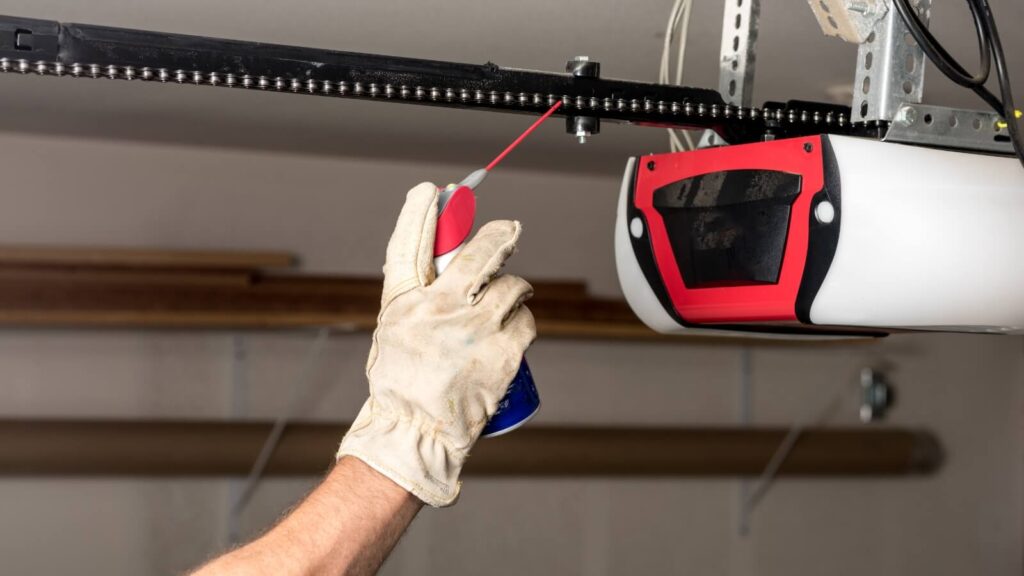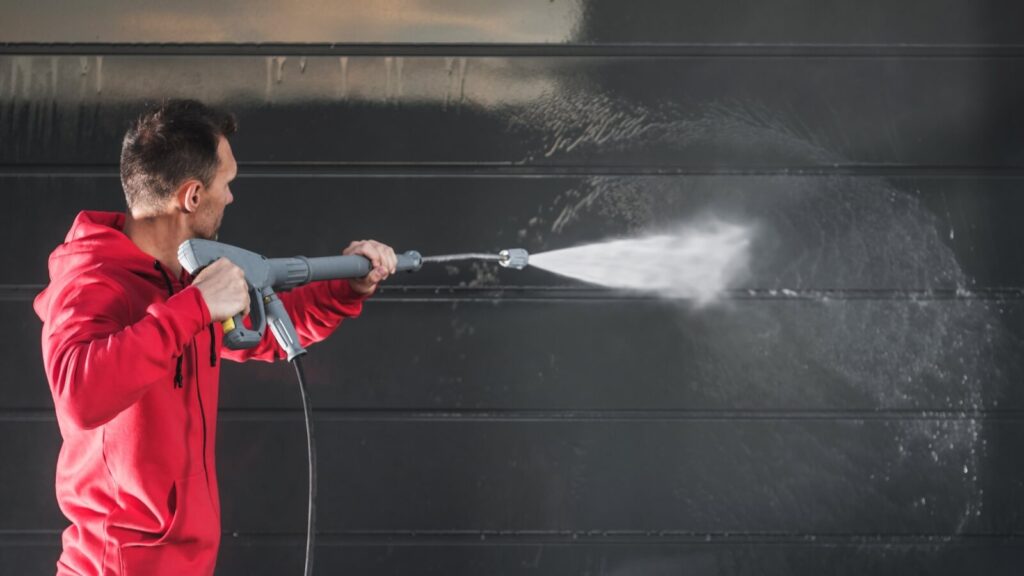The secret to keeping a residential garage door running well is to learn how to repair it. It’s important to keep your garage door in proper working order to avoid any inconvenience or potential safety hazards. While some garage door problems may require professional assistance, there are several maintenance tasks and troubleshooting techniques you can try at home.
In this blog post, we will explore some useful tips to help you address common garage door issues independently. Additionally, we will discuss scenarios where calling for repair or considering a new door is the best course of action.
Maintenance Tips
Regular Inspection and Lubrication
Regular inspection is crucial for identifying potential problems before they escalate. Examining your garage door’s hardware, including springs, cables, rollers, hinges, and tracks will help identify areas of concern.
Look for any signs of wear and tear, rust, or misalignment. If you notice any issues, such as loose or frayed cables or damaged springs, it’s best to call a professional for complicated repairs.
To ensure smooth operation, lubricate all moving parts with a silicone-based lubricant.
- Apply a thin layer of lubricant to the rollers, hinges, and springs.
- Avoid using petroleum-based products as they can accumulate dust and debris.
Replace Batteries and Bulbs
Test all the garage door openers and lights to ensure everything is working properly. Unplug the garage door opener and see if the wall button is working. If your garage doesn’t open, you need to replace the battery.
This may be a great opportunity to also replace the batteries in the door remotes, as well as, replace the garage door opener light blubs (especially if it has been a while since they have been replaced). The last thing you need is to get into the garage and the door is dead or the lights won’t come on, leaving you out in the dark.
Note that it is best to unplug the automatic door opener while doing maintenance on all of these things to prevent the door from moving and harming someone. Make sure to clamp the tracks down to prevent movement or keep the door shut while doing maintenance.
Maintaining the Tracks
Garage door tracks must be clean and aligned for the door to operate properly. Inspect the tracks for any dents, bends, or debris that may obstruct the door’s movement. If you notice minor misalignments, gently tap the track with a rubber mallet to straighten it. Clean the tracks using a cloth and remove any dirt or grease buildup.
Testing Safety Features
Modern garage doors are equipped with safety features, such as auto-reverse mechanisms and photoelectric sensors. To ensure their proper functioning, perform these regular tests:
- Auto-Reverse Test: Place a small object, like a piece of wood, in the door’s path and close it. If the door doesn’t reverse upon contact, adjust the opener’s sensitivity settings or consult a professional for assistance.
- Photoelectric Sensor Test: With the door fully open, wave a long object, such as a broomstick, in front of the photoelectric sensors. Begin to close the door while the broomstick is in the sensor’s path. If the door doesn’t reverse, clean the sensors and realign them. If the problem persists, contact a professional.
If your garage door is over 20 years old and lacks certain safety features, it may be time to consider an upgrade to a safer garage door, especially if you have young children or pets.
Examine Garage Door Hardware
Periodically check the garage door hardware for signs of deterioration.
- Look over the tracks and hinges of the garage door. Any loose bolts or fasteners on moving parts should be tightened as necessary using a socket wrench or screwdriver.
- Check any garage door rollers that are not connected to the lift cable system for wear. While nylon rollers tend to split with time, steel rollers will display worn bearings and may appear uneven. If replacement rollers are required, buy and install them.
- Check the lift wires that are attached to the door for signs of wear. The cables may have significant rust, damage, or broken strands. If they appear worn, contact a professional.
NOTE: Do NOT try to replace garage door cables on your own. These cables are under high tension and could cause serious damage or injury if not handled by a professional.
Maintaining the Door’s Balance
An imbalanced garage door can strain the opener and cause premature wear. To check the door’s balance:
- Disconnect the opener: Pull the release handle to disengage the opener from the door.
- Manually lift the door halfway: If properly balanced, the door will stay in place. If it falls or rises, there is an imbalance.
- Adjust the spring tension: Consult a professional to adjust the torsion springs and restore the door’s balance.
Clean Garage Door Surface and Weatherstrip
Keeping your garage door clean on the outside and inside contributes to how long your garage will stay in working condition. Make sure to inspect the surface of the door to see if it needs to be repainted or re-stained.
The cleaning and maintenance required will depend on the material of your garage door:
- Wooden garage doors should be wiped down and cleaned with a dry cloth.
- Patch any small holes with wood filler, lightly sand and paint or stain when needed.
- Wash vinyl or other synthetic garage doors with a soft cloth and non-abrasive cleaner.
- Thoroughly rinse the door with a hose then dry with a microfiber cloth.
- Additionally, brush down any cobwebs on the inside of the garage door.
After cleaning, make sure your garage is ready for the weather to come! Proper weatherstripping helps keep out drafts, debris, and pests while also improving energy efficiency. Inspect the weatherstripping around the door and replace any worn-out or damaged sections. Use a vinyl cleaner to keep the weatherstripping clean and pliable.
Knowing When to Call for Repair or Consider a New Door
While many garage door issues can be resolved with DIY techniques and proper guidelines, some problems require professional intervention or may indicate the need for a new door. Here are a few scenarios where it’s best to seek expert assistance:
- Broken/damaged springs or cables: Garage door springs and cables are under high tension and can be dangerous to handle without proper training and equipment.
- Severely damaged panels: If your garage door panels are significantly dented, cracked, or warped, it may be more cost-effective to replace the entire door.
- Persistent motor or opener problems: If your opener is frequently malfunctioning, making strange noises, or not responding to commands, it’s best to consult a professional.
- Age and extensive wear: If your garage door is approaching the end of its expected lifespan or requires frequent repairs, it may be more practical and safer to invest in a new door.
If you’re in need of overhead garage door assistance, look no further! Able-Luebke Overhead Doors can help repair or replace your garage door. No matter the need, Luebke technicians are qualified in top-notch repairs and installation services that you can rely on. Contact us today to receive the help you need!


